In 2023, New York’s economic indicators reveal a complex tapestry of growth and challenges. While technology, healthcare, and green energy sectors are thriving, issues like rising interest rates and housing shortages pose significant hurdles. The shift towards remote work is reshaping workforce dynamics, and consumer spending increasingly prioritizes sustainability. As the state grapples with global disruptions and policy shifts, the resilience and adaptability of its economy remain essential. The coming months promise intriguing developments.
Employment Trends and Workforce Dynamics
Although economic challenges have persisted, New York’s employment trends in 2023 reveal a resilient and dynamic workforce. The city has witnessed a significant rebound in job sectors such as technology, healthcare, and green energy. This resurgence is attributed to strategic investments and adaptive policies by both the public and private sectors. Remote work continues to play a pivotal role, allowing flexibility and attracting talent beyond geographical constraints. Additionally, a surge in entrepreneurial ventures has contributed to job creation and economic diversification. However, the hospitality and retail sectors face ongoing recovery hurdles, grappling with shifting demands and labor shortages. Overall, New York’s workforce demonstrates adaptability, continually evolving to meet the demands of a modern and competitive economy. Furthermore, the fintech ecosystem in New York is rapidly growing, creating new job opportunities and attracting a diverse talent pool.
Consumer Spending Patterns in New York
In 2023, consumer spending patterns in New York highlight significant shifts in shopping habits, particularly between online and in-store purchases. With the growing influence of e-commerce, many consumers are opting for online shopping, although brick-and-mortar stores still maintain an essential role in the retail landscape. This dynamic reflects broader trends in consumer preferences and technological advancements impacting shopping behaviors. Additionally, New York’s cultural sector generates over $21 billion, showcasing the importance of diverse shopping experiences in driving economic growth.
Shifts in Shopping Habits
How have consumer spending patterns in New York evolved in 2023? New Yorkers have increasingly prioritized sustainability and ethical consumption. There is a notable shift towards purchasing locally-sourced products and supporting small businesses, driven by a growing awareness of environmental and social issues. Additionally, experiences and services have gained traction over tangible goods, as consumers seek value in memories and personal enrichment. The emphasis on health and wellness has also influenced spending, with a rise in demand for organic foods and fitness-related offerings. Inflationary pressures have prompted more strategic spending, with a focus on essential goods and long-term value rather than impulsive purchases. These trends reflect an adaptive consumer base responding to broader economic shifts and cultural dynamics in 2023.
Online vs. In-Store
Despite the convenience of online shopping, New York consumers in 2023 are rediscovering the value of in-store experiences. Physical retail spaces offer tangible benefits such as immediate product availability and the opportunity for social interaction, creating a resurgence in foot traffic. Stores have adapted by enhancing customer service and providing immersive environments that online platforms cannot replicate.
Conversely, online shopping retains its appeal through vast selection and competitive pricing. However, delivery delays and return hassles have prompted some consumers to reconsider in-store purchases. The hybrid model, where customers research online but buy in-store, has become increasingly prevalent. This dual approach reflects a shift in spending patterns, as consumers seek convenience without forgoing the satisfaction of immediate ownership and personalized service.
Housing Market Developments and Challenges
Although New York’s housing market has shown resilience in the past, 2023 presents a unique set of developments and challenges. Rising interest rates have increased mortgage costs, impacting affordability for potential buyers. The market is also experiencing a shift as remote work trends continue, influencing demand in suburban areas at the expense of urban centers. Supply chain disruptions have delayed construction projects, exacerbating the housing shortage. Additionally, tighter regulations are affecting real estate transactions, leading to slower market activity. Despite these hurdles, there’s a growing emphasis on sustainable building practices, driven by environmental considerations and legislative mandates. The interplay between these factors shapes a complex landscape, requiring adaptive strategies from stakeholders to navigate the evolving market dynamics effectively. Changes to squatters rights in New York have also influenced property management and ownership considerations in the current market.
Business Investment and Economic Growth
The challenges in New York’s housing market underscore broader economic trends influencing business investment and growth in 2023. As real estate costs soar, businesses encounter heightened operational expenses, prompting strategic shifts. Companies increasingly prioritize cost efficiency and capital allocation, driving investments towards technology and automation. These actions aim to offset rising overheads and maintain competitiveness. Additionally, the uncertain economic climate, marked by fluctuating interest rates and inflationary pressures, impacts investment decisions. Businesses exhibit caution, favoring lower-risk ventures and focusing on sustaining growth. Despite these challenges, New York remains a hub for international investment, supported by its diverse economy and strong financial sector. This environment fosters opportunities for innovation and adaptation, essential for maintaining economic momentum amid evolving market dynamics.
The Role of Innovation in Economic Resilience
Innovation serves as a cornerstone for economic resilience, particularly in a dynamic market like New York’s. The city thrives on a robust ecosystem of startups, technology firms, and creative industries, driving economic adaptability. This innovation-centric environment enables businesses to respond swiftly to changing market conditions, thereby sustaining growth and stability. Through investment in technology, research, and development, New York companies regularly introduce new products and processes that enhance productivity and competitiveness. Furthermore, collaboration between academia and industry fosters a continuous flow of ideas, further fortifying economic structures. As companies embrace digital transformation, they not only improve operational efficiency but also create new employment opportunities. Consequently, innovation underpins New York’s ability to withstand economic fluctuations, ensuring long-term prosperity. Notably, the city’s cultural attractions and performances play a significant role in attracting both tourists and talent, which further stimulates economic growth.
Impact of Global Disruptions on New York’s Economy
New York’s economy, while considerably bolstered by its innovative capabilities, faces challenges from global disruptions that test its resilience. The interconnectedness of global markets means that international conflicts, supply chain disruptions, and fluctuating trade policies can markedly impact New York’s robust financial and commercial sectors. The volatility in international energy prices and geopolitical tensions also contribute to economic uncertainty. These factors can lead to increased costs for businesses, affecting profitability and consumer prices. Additionally, disruptions in global technology and manufacturing supply chains pose risks to New York’s tech and retail sectors, potentially hampering growth. External shocks, such as pandemics, further strain sectors like tourism and hospitality. Consequently, New York must continuously adapt to mitigate the adverse effects of these global disruptions.
Policy Decisions Shaping Economic Outcomes
In 2023, New York’s economic landscape is markedly influenced by key policy decisions. Adjustments in fiscal policies have aimed to balance state budgets while fostering growth, and changes in the regulatory environment seek to enhance business efficiency and compliance. Additionally, the influence of monetary policy, particularly interest rate adjustments, plays an essential role in shaping investment and consumer behavior within the state.
Fiscal Policy Adjustments
Although the economic landscape of New York in 2023 is complex, the state’s fiscal policy adjustments play a pivotal role in shaping its economic outcomes. In response to evolving economic indicators, New York has implemented targeted fiscal measures aimed at sustaining growth and mitigating potential downturns. Strategic tax incentives have been introduced to stimulate investment in key sectors, while public spending has been adjusted to prioritize infrastructure and education. These adjustments are designed to balance the budget while fostering an environment conducive to business expansion. Additionally, fiscal policies have been fine-tuned to address income inequality, with increased allocations for social programs. Such measures reflect a proactive approach to stabilizing the economy, ensuring resilience against external shocks, and promoting long-term prosperity.
Regulatory Environment Changes
The regulatory environment in New York during 2023 has experienced notable transformations, directly impacting the state’s economic landscape. Significant policy shifts have been introduced in sectors such as technology, real estate, and environmental regulations. These changes aim to promote innovation, address housing shortages, and enhance sustainability. Technology firms face new data privacy mandates, impacting their operational compliance costs. Meanwhile, real estate developers navigate stricter zoning laws designed to increase affordable housing supply. Environmental regulatory adjustments, including enhanced emissions standards, seek to mitigate climate change impacts. Such regulatory modifications influence business strategies, investment decisions, and ultimately, economic growth within the state. Stakeholders, from corporate entities to small businesses, are adapting to guarantee alignment with evolving regulatory expectations in this dynamic environment.
Monetary Policy Influence
As monetary policy decisions unfold in 2023, their influence on New York’s economic outcomes becomes increasingly apparent. The Federal Reserve’s interest rate adjustments are a key determinant, affecting borrowing costs for businesses and consumers alike. Rising rates have dampened investment enthusiasm, curbing expansion plans and potentially slowing job growth. Concurrently, inflationary pressures persist, challenging policymakers to strike a balance between fostering economic stability and managing price levels. Quantitative easing measures are being reassessed, with implications for liquidity and credit availability within the financial sector. Additionally, these policy shifts impact the real estate market, where higher mortgage rates deter potential buyers, influencing housing demand and prices. To conclude, monetary policy decisions are pivotal in shaping New York’s economic landscape in 2023.
Future Prospects for New York’s Economic Landscape
With a robust foundation established in recent years, New York’s economic future appears poised for growth and innovation. The city’s strategic investments in technology and infrastructure are anticipated to drive significant advancements. Emerging sectors such as fintech, biotech, and green energy are expected to benefit from supportive policies and an influx of skilled talent. Additionally, New York’s commitment to sustainability and resilience will likely attract environmentally-conscious businesses and investors. The real estate market, while facing challenges, is projected to stabilize with adaptive reuse of commercial spaces. Moreover, tourism and hospitality sectors are predicted to rebound strongly, bolstered by increasing global connectivity. Overall, a diversified economic base and proactive governance position New York to navigate future uncertainties effectively.
Frequently Asked Questions
How Has the Tourism Sector Influenced New York’s Economy in 2023?
Tourism in 2023 markedly bolstered New York’s economy by increasing employment opportunities and driving consumer spending. The influx of visitors contributed to revenue growth across hospitality, retail, and entertainment sectors, enhancing economic stability and resilience amidst broader market challenges.
What Are the Trends in New York’s Agricultural Sector This Year?
The agricultural sector in New York has experienced steady growth, with increased investments in sustainable farming practices. Innovations in technology and crop diversification have contributed to resilience against climate challenges, enhancing productivity and market competitiveness in 2023.
How Have Environmental Policies Affected New York’s Industries in 2023?
Environmental policies in 2023 have led to significant shifts in New York’s industries. Stricter regulations have prompted companies to adopt sustainable practices, resulting in increased innovation and investment in green technologies, impacting operational costs and competitive dynamics across sectors.
What Is the State of the Tech Startup Ecosystem in New York Currently?
The tech startup ecosystem in New York currently thrives, reflecting innovation and resilience. Despite economic challenges, startups maintain growth through robust investments, supportive infrastructure, and a collaborative community fostering technological advancements and entrepreneurial initiatives across various sectors.
How Do Cultural Events Impact New York’s Economic Performance in 2023?
Cultural events greatly boost economic performance through increased tourism, job creation, and local business revenue. These events attract diverse audiences, stimulating spending in hospitality, retail, and transportation sectors, thereby enhancing overall economic importance and resilience in urban environments.
Conclusion
In 2023, New York’s economy showcases resilience and adaptability amidst challenges and opportunities. The burgeoning technology, healthcare, and green energy sectors drive growth, while shifts in consumer behavior underscore sustainability. Despite hurdles like rising interest rates and housing shortages, innovation and entrepreneurship flourish, bolstering economic dynamism. Global disruptions test but do not derail progress, with policy decisions playing a critical role in shaping outcomes. Overall, New York remains a significant hub for international investment and future economic prospects.

